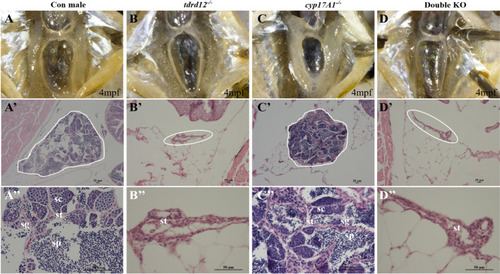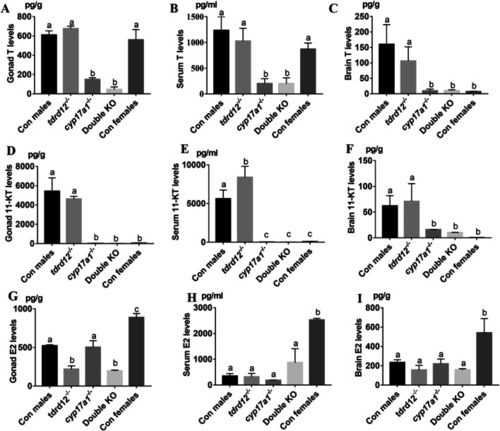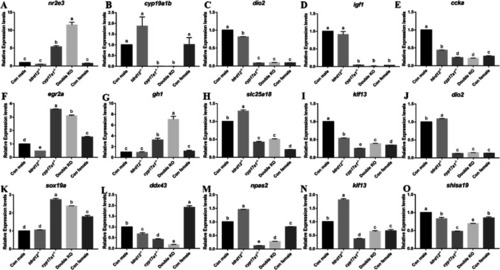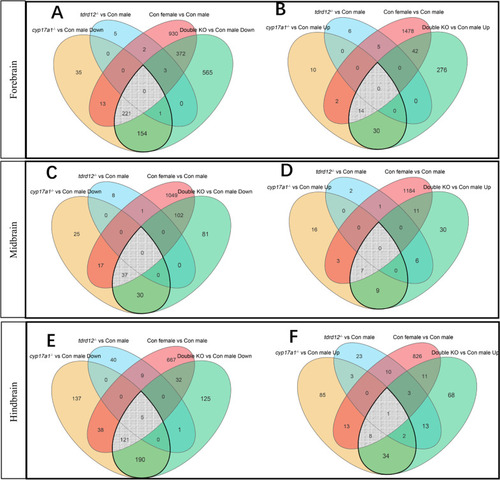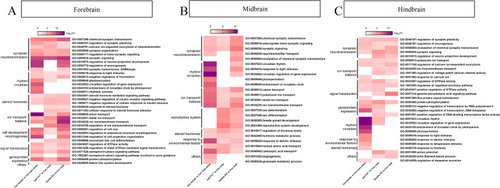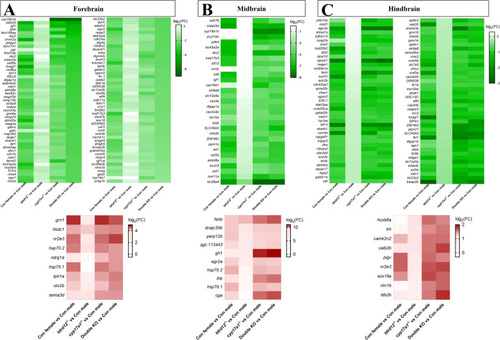- Title
-
Zebrafish gonad mutant models reveal neuroendocrine mechanisms of brain sexual dimorphism and male mating behaviors of different brain regions
- Authors
- Dai, X., Pradhan, A., Liu, J., Liu, R., Zhai, G., Zhou, L., Dai, J., Shao, F., Yuan, Z., Wang, Z., Yin, Z.
- Source
- Full text @ Biol Sex Differ
|
Courtship parameters of wild-type male, |
|
Identification of secondary sex characteristics (SSCs). |
|
Morphology of primary sex characteristics (PSCs) of the mutants. |
|
Hormone concentrations of testosterone (T), 11-ketotestosterone (11-KT) and 17β-estradiol (E2) in the gonads, serum, and brain of control males, |
|
RT‒qPCR was performed to validate the RNA transcriptome data in different brain region samples. |
|
Venn diagram for significantly differentially expressed genes (DEGs) in |
|
Heatmap shows the top Gene Ontology (GO) terms of male-biased genes, differentially expressed genes (DEGs) in |
|
Heat map shows the representative co-downregulated (upper) and co-upregulated (down) gene expression in wild-type females, |



